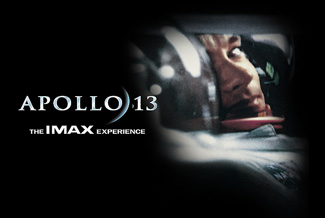|
Cinemas in the U.S. and Canada have been showing 35mm films on Imax screens and advertising them as being "specially enhanced" for Imax presentation.
"Tomb Raider" and "Planet Of The Apes" have both recently been exhibited and advertised this way. I asked Imax Corp. about the "special enhancement" technique and received the following interesting reply from Gord Harris, Director of Film Technology & Presentation Quality. It would appear that the exhibitors are trying to fool the public into thinking that they're getting something special. All the audience are actually getting is an unmasked 35mm presentation.
 IMAX Response IMAX Response
By Gord Harris, Director of Film Technology & Presentation Quality
"We don't have a lot of information on this practice, but will try to help.
We are working on a research basis on digital image processing techniques that would indeed "enhance" 35mm films that are scanned, manipulated to decrease grain, sharpened, etc and then recorded back out onto a large 15/65 negative using film recorders. The biggest advantage of this approach is that the large 15/70 print made from such a digitally-produced negative has a large image area through which we can pump 10X the light, and is also much steadier then simply blowing up a 35mm print bigger in a projector. We can preserve and enhance every nuance of information on the original 35 neg with our patented rolling loop projectors.
Those who claim to be doing "special enhancement" by projecting 35mm prints today are really only just magnifying a normal 35mm print far beyond the capability it was designed for - sometimes as wide as 60 feet or more. To the best of my knowledge no one has a special projector or lens for this purpose, so you have all the normal limits of 35mm projection - jump, weave, focus breathing, scratches, wear, tear etc but magnified even bigger than a normal cinema. Experienced projectionists consider that 4p35mm should not be projected much wider than 35 to 48' max, say. Even at 35 feet, this is a magnification of 505X of the 0.831" wide 1.85:1 frame (ISO2907). Kodak has recommended a max of 48 feet for this format.... So all these theatres doing this are pushing the limits of what an audience expects from a 35mm film - it may be big, but it will not be great. Simply magnifying things bigger doesn't necessarily make them better.
As far as I know, when these theatres have projected either 1.85:1 or 2.35:1
anamorphic, they have NOT masked down the screen (which is very large and high and hence difficult to do). They are simply using our IMAX screen and the normal theatre with a 35mm picture. I have seen some of this here at Ontario Place and Famous Players, and frankly to my eyes they look far too dim, blurry and shaky at such large sizes! Our good sound system does help, however - they can sound good. So does our stadium seating.
We at IMAX Corporation in Technology Group do not particularly condone or support this activity, as it can confuse people about what IMAX is all about. However, we recognise that we do not yet have as many commercial IMAX films as people want and request for their theatres. We are working on this problem, and hope to have good solutions so they do not have to do this 35mm projection quite soon. We call such converted films "repurposed" but they still cannot match the full image quality of a film shot on 15 perf 65mm neg originally, which capture on the order of 60 to 100 million pixels of clearly resolved information. However, projecting them properly from a 15/70 print is far better then simply magnifying 35mm projector prints more than they should be!"
|
Further in 70mm reading:
The Audience Rules for LFCA
|

 IMAX Response
IMAX Response